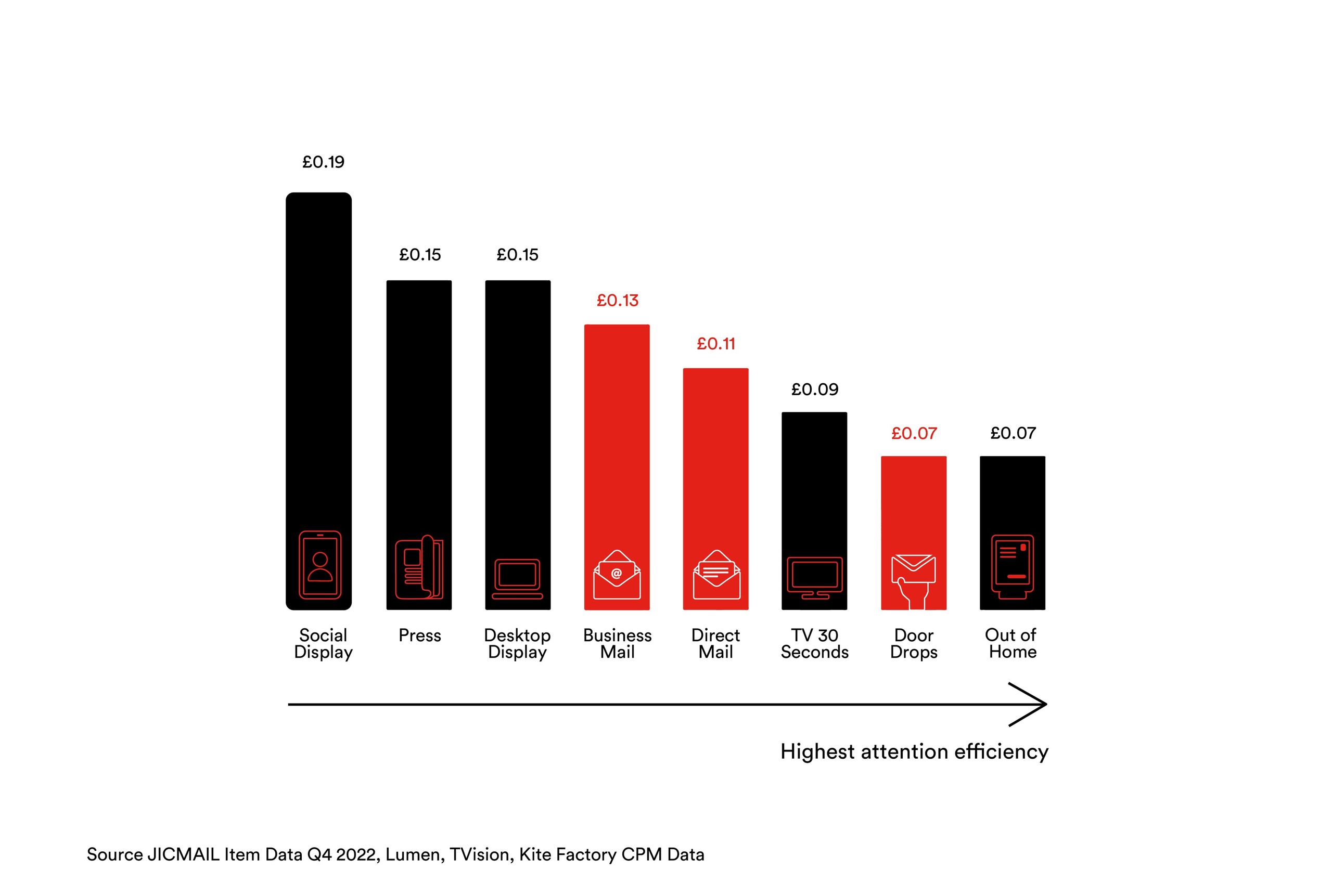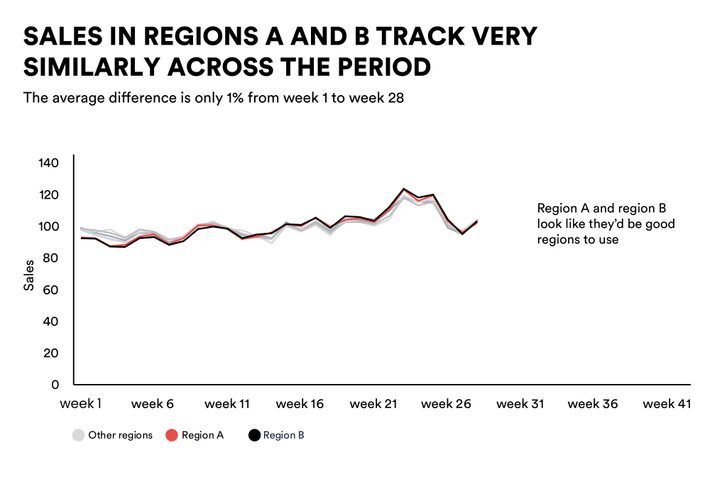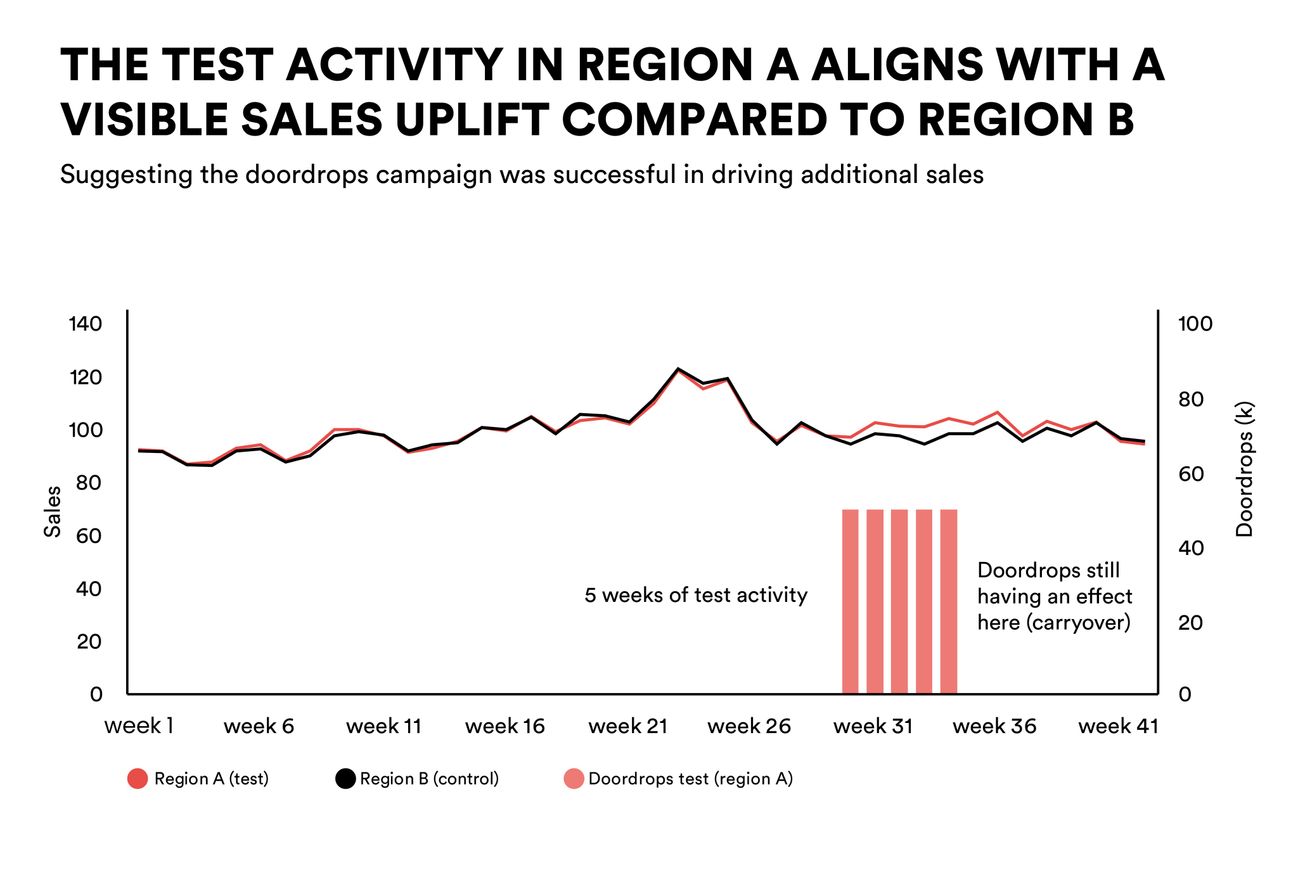Feeling the squeeze from your CFO? Adding mail to the mix can boost ROI
Dr Grace Kite explores how CMOs can overcome challenges in demonstrating marketing ROI within tighter budgets and increased CFO scrutiny. If you're a marketer aiming to boost ROI and secure C-suite support, reading this article is a must.

As budgets have got tighter, and marketers indicate more pressure from CFOs, finding value for money media choices has become more important. New research can find a start point in this search for your brand, but uncovering the true value of new media for your brand can only come from measurement.
In the wake of the COVID-19 pandemic, energy crisis and subsequent cost of living crisis, many businesses are struggling with profitability.
Against this backdrop, making the case for marketing is tricky. 65% of CMOs say their board still view marketing as a cost centre, and 77% feel pressure to prove their campaigns are providing short-term return on investment (Data from iPWC and iiLinkedIn).
In this climate, research showing the cost efficiency of different media can seem like a godsend. But while JICMAIL showed last year that mailings can be a cost-efficient media for driving attention, how can you know if it’s a medium that will work for your brand? The simple answer is to try it out and to make sure you measure its impact!
Mail provides value for money in getting eyes on your marketing message

In 2023, JICMAIL brought together research from across multiple different media to show a new view of attention: cost per minute of attention by media channel. You may well have seen the chart already – it’s got around! The chart shows that addressable mail, business mail and door drops have a cost efficiency in terms of attention that is higher than digital channels, and in a similar ballpark to TV. It may well have got you thinking about how you might fit mailings into your media planning.
Chart: Cost per minute of attention from ABC1 adults

As a start point, it’s worth discussing attention itself: attention is a measure of the time a consumer spends actually watching your advert. It has become more prominent over the past couple of years as analysis of eye-tracking on ads from Lumen and others has garnered interest from marketers.
We can now understand a lot more about how consumers actually engage with media. It’s no longer a question of “can my audience see my ad?”, but rather “does my audience look at my ad? And how long for?”
This is significant because evidence is emerging that shows attention is related to prompted recall, brand choice, and a “virtual proxy for sales” (1. Lumen and 2. Amplified Intelligence).
So, if more attention is linked to better sales performance, and mailings are shown to be cost-efficient at driving attention, should mailings be part of your media plan?
Well… maybe. So far, there is little evidence that attention-optimised media plans are better for sales. And, even if there was, it’s important to recognise that meta studies like those by JICMAIL, Lumen, and Amplified Intelligence present averages across lots of brands. They should be used as a guide, but you need to know what will happen for your own business.
Checking it’s the right thing for your business, right now
So how might you go about it? Well, for a start you need good data! And secondly, you need a marketing measurement framework. One that gives you relevant outcomes and useful insights for your future decision-making.
Say you want to test if door drops work for your brand. A simple approach to this could be an audience or geo-test. For this approach you’ll need sales data that you can cut into different parts depending on your customers’ demographics, or where they live.

In the example below, we looked at sales data by region, and selected 2 regions that have similar sales patterns.

Source: Magic Numbers
The next step was to carry out a door drops campaign in the test region and compare sales in that region to sales in the control region which didn’t have door drops.
The chart below shows the picture several weeks later, after the doordrops and their carryover effect have had a chance to mature. We’ll call one our test region, and one our control.
In the chart, the difference between the test and control lines shows how many extra sales the door drops campaign produced.

Source: Magic Numbers
Budgets are getting tighter, and CFOs are getting tougher
In the example set out above, the test results were key to getting budgets signed off. Initially, while the CFO did believe that advertising works, they didn’t believe it was value for money for their brand. They felt that promotions brought obvious boosts to sales, which weren’t so clear with advertising. Therefore, budgets were prioritised in line with the risks involved – as the CFO saw it. The outcomes of the test were presented directly to the C-suite, with the CFO liking the results so much they were keen to double the regional door drops budget. Seeing the value of door drops for the business quantified the risk for increasing the ad investment, compared to putting more money into promotions.

Media measurement is vital for making sound decisions about how to spend your media budget. Putting your pounds in the right place is more important than ever. Attention metrics may be useful for understanding how consumers engage with your media, but what your business really needs to know is the media’s impact on sales. If you’re considering adding mailings to your media plan, to take advantage of what looks like cost-efficient advertising, then also consider what you need to put in place to know how well it’s working and get the most out of it. It’ll bring your CFO on board and help marketing add value to your business.
The author, Dr. Grace Kite, is Founder of magic numbers and magic works, business economist, Marketing Week columnist, speaker on marketing effectiveness. PhD in Economics, leads award-winning campaigns, Grand Prix winner 2022, Chair of Technical Judges 2020, 2022.
Editor’s Note: Additionally, using insights from the recent Marketreach/WARC report 'The Attention Advantage', you can find strategies to increase your brand's visibility, boost marketing ROI, and gain an advantage over your competitors with mail.
Further Reading and Resources
- https://www.pwc.co.uk/issues/transformation/customer/cmo-study.html
- https://news.linkedin.com/2022/november/helping-marketers-prove-their-strategy-is-working
- https://lumen-research.com/blog/people-do-watch-ads-just-not-in-the-way-you-think/
- https://www.amplifiedintelligence.com.au/wp-content/uploads/2022/07/Amplified-Intelligence-Attention-and-Recall.pdf
- https://www.marketreach.co.uk/resource/WARC-Attention-Advantage-of-Mail


